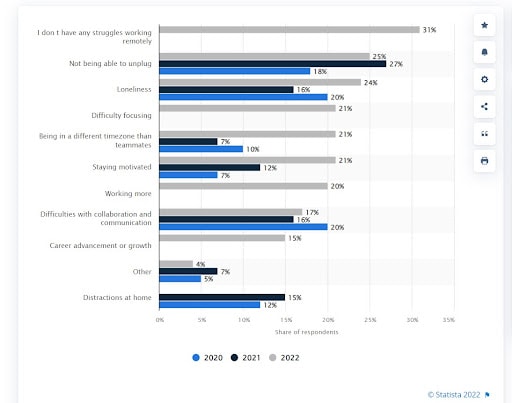
If you’re like most recruiters, you’ve wanted to hire remote employees. After all, remote hiring has tons of benefits – including increased efficiency and cost savings. But before you make the jump to remote hiring, there are some things you need to know about remote hiring. Let’s discuss 17 pitfalls of remote hiring that you must avoid if you want to ensure your remote hire is successful!
1. Not having a clear job description
One of the most important things you can do when you hire remote employees is to have a clear job description. This way, candidates know exactly what they’re applying for and the expectations.

Without a clear job description, you’re likely to end up with candidates who are either unqualified or not a good fit for the position.
2. Failing to screen candidates while remote hiring
When you hire remote employees, it’s important to screen candidates thoroughly. This means taking the time to interview each candidate and ask the tough questions. Quite often, companies make the mistake of hiring someone without thoroughly screening them first, and it ends up costing the company in the long run.
3. Ignoring red flags
When you hire remote workers, it’s essential to trust your gut. If you see red flags, don’t ignore them. For example, if a candidate seems evasive or cannot answer your questions, it’s probably best to move on. These could be warning signs that the candidate is not a good fit for the position – and if you ignore them, you could regret it later.
4. Hiring someone who isn’t a good fit
Just because someone is qualified for the job doesn’t mean they’re a good fit. When you hire remote employees, it’s essential to consider whether or not the candidate would be a good fit for the company culture.
Also Read: How to build and sustain a positive work culture in a hybrid work environment!
5. Failing to communicate expectations
It’s essential to communicate your expectations to a remote hire. This means setting clear goals and deadlines and providing feedback regularly. Without clear communication, your remote hire will likely become frustrated and may even quit.
6. Not providing adequate training
When working with a remote hire, it’s crucial to ensure that you provide adequate training. For example, if you’re hiring for a marketing team, your remote hire should be educated about the different marketing assets, cross-functional teams and stakeholders within the company so that they will be able to hit the ground running. Teams that are adequately trained and onboarded are more likely to succeed, so it’s worth the extra effort.
7. Not investing in tools and resources
You must ensure that your remote hire needs access to the right tools and resources to succeed. Without these things, they’ll likely struggle to do their job – which could, in turn, cost your business time and money. So, before hiring remotely, ensure your remote hire has the tools and resources needed for support.
Also Read: Remote working tools you need!
8. Not having a proper system in place for tracking progress
It’s essential to have a proper system to track progress when working with a remote hire. This way, you can ensure that everyone is on track and meeting deadlines. Without a system in place, it’s easy for things to fall through the cracks – which could cost your business dearly.
9. Failing to build relationships
When working with a remote hire, building relationships is of utmost importance. This way, you can create a sense of camaraderie and trust.
10. Not providing incentives
To keep your remote hire motivated, it’s essential to provide incentives. This could be bonuses, paid time off, or even just recognition for a job well done. Without incentives, your remote hire will likely become bored and may even start looking for other opportunities.
11. Not having a backup plan
When working with a remote hire, it’s crucial to have a backup plan. If one of your remote hires quits or cannot work, you won’t be left in the lurch. Without a backup plan, you may find yourself scrambling to find a replacement – which could cost your business time and money.
12. Not being available
You must be available for questions, concerns, and feedback when working with a remote hire. Otherwise, they are likely to become frustrated.
13. Failing to establish communication protocols
Establishing communication protocols to ensure that your remote team is effective is essential. This way, everyone knows how and when to communicate with each other. Without communication protocols, it’s easy for things to get lost in translation – which could cost your business dearly. Don’t rely only on email because email can be easily misinterpreted and may even get lost in the shuffle.
Instead, it’s essential to use a communication tool everyone is comfortable with – such as Slack or Zoom.
14. Lack of quality control measures
It’s also essential to have quality control measures in place. This way, you can ensure that the work is up to your standards. Without quality control measures, you’re likely to end up with subpar work – which could cost your business dearly.
15. Hiring too many employees at once
While hiring many remote employees at once may be tempting, it’s important to resist the urge. This is because onboarding and training a large group of people can be overwhelming – and may even lead to mistakes. Instead, slowly building your team one person at a time is best.
16. Failing to trust your team
One of the frequent mistakes businesses make when working with a remote hire is failing to trust them. This is a huge mistake, as it will only lead to tension and mistrust on both sides. If you want your remote hire to succeed, you need to trust them to do their job – otherwise, you’ll likely regret it later.
17. Poor management of remote staff
One of the most important – but often overlooked – aspects of remote work is the proper management of remote staff. Without proper management, your remote hire will likely become bogged down and may even start looking for other opportunities. So, if you’re hiring remotely, make sure you have a plan for managing your remote hire.
Also Read: How to create a performance management plan
Final Thoughts
Hiring remotely can be an excellent way to build a successful team – but only if you avoid these common pitfalls. By taking the time to plan and prepare, you can set your team up for success from the start. So, if you’re thinking about hiring remotely, make sure you keep these tips in mind.
Frequently Asked Questions
Q1. How do I make my remote work successful?
Ans. Five mantras to follow to become successful at working remote:
- Create a peaceful and comfortable work zone (A mini home office, perhaps!)
- Avoid and ignore distractions
- Utilize savvy task management tools
- Keep in touch with your team (Collaboration is the key!)
- Do not forget to have a harmonious work-life balance!
Q2. How do you ensure that your remote employees work?
Ans. Four major tips to ensure that the remote workers are productive and working:
- Productivity reports and analysis should be 100% data backed (Focus should be on results and not on work hours)
- There should be clear and concise goals and timelines set for employees (Ambiguity do not beget results)
- Employees should receive acknowledgement, rewards, and incentives for their hard work
- Task management tools and software can come in handy for monitoring progress
This article is written by Amrapali Rai.
Amrapali is a freelance SEO strategist and content writer who works with brands and SaaS companies to support their SEO and content strategy and blogs about technology and marketing at Bazaar Expert.

































